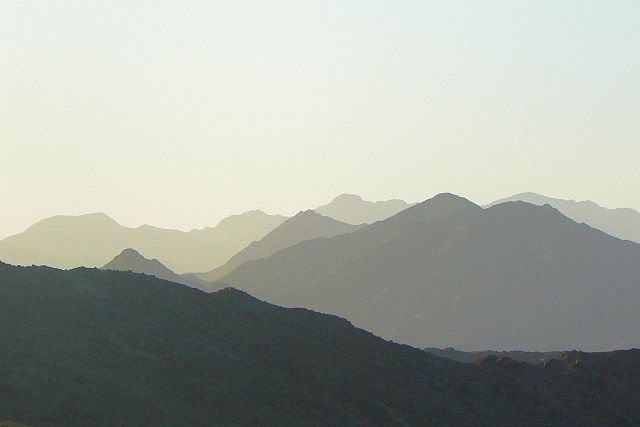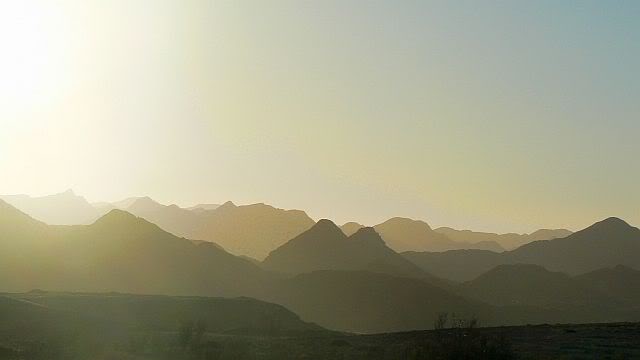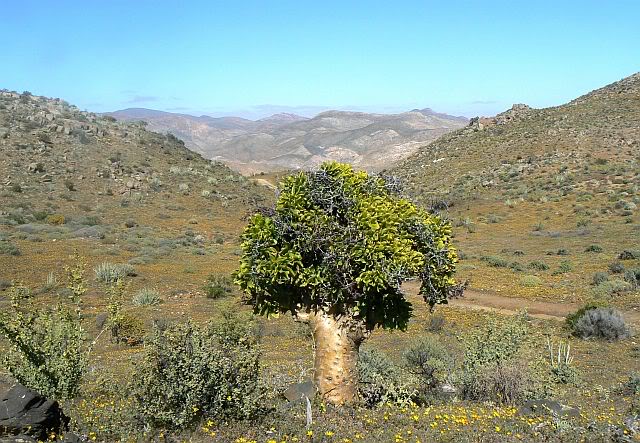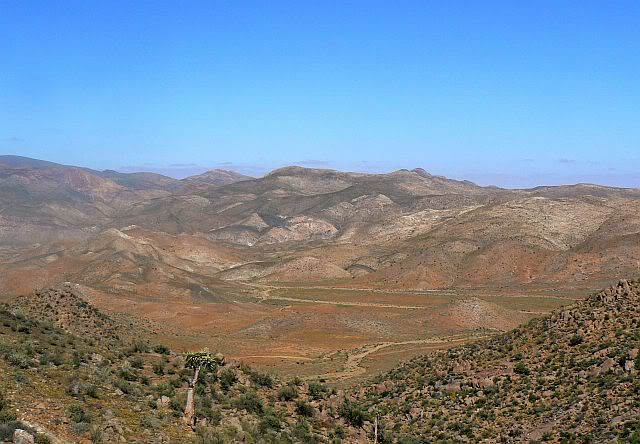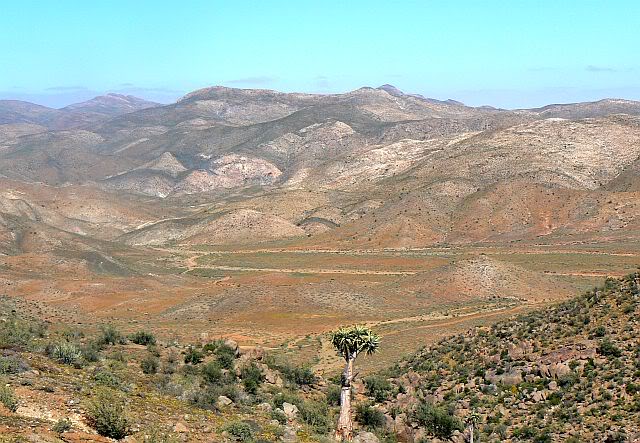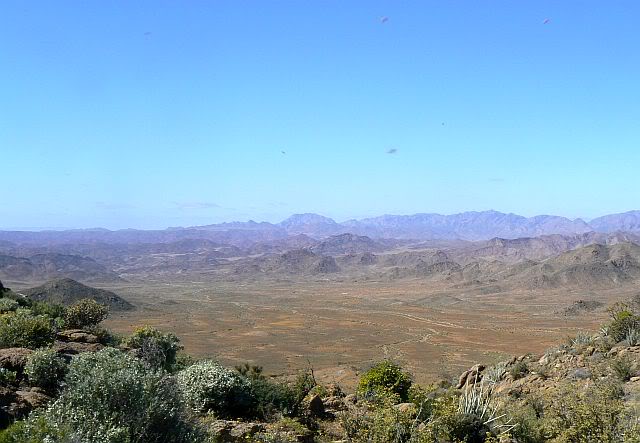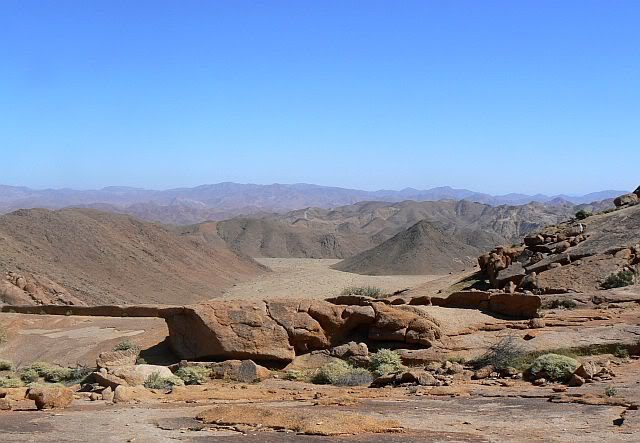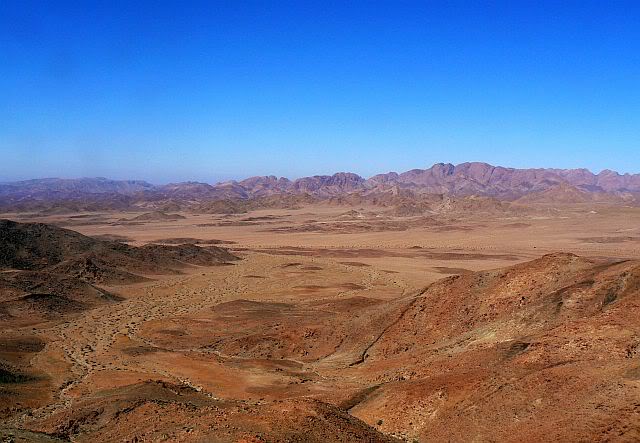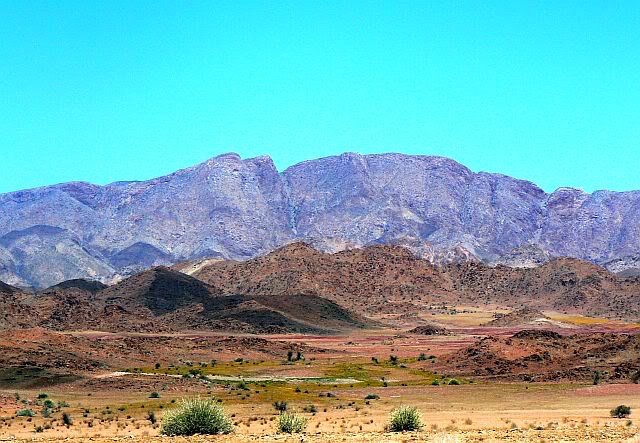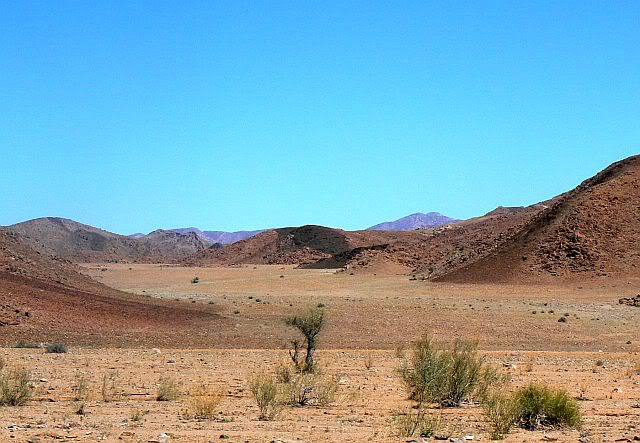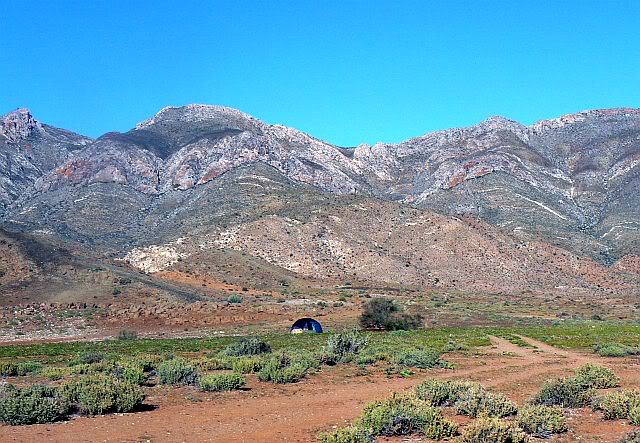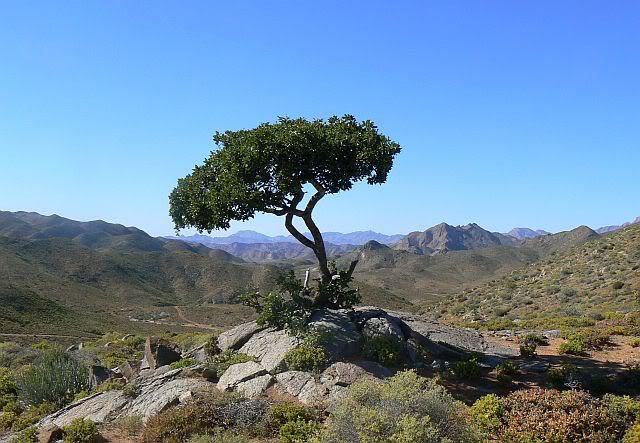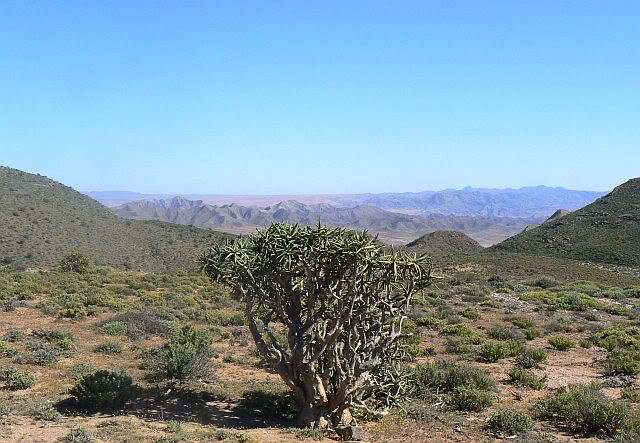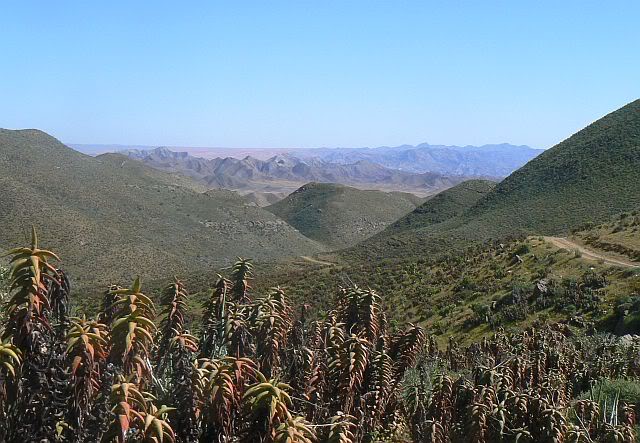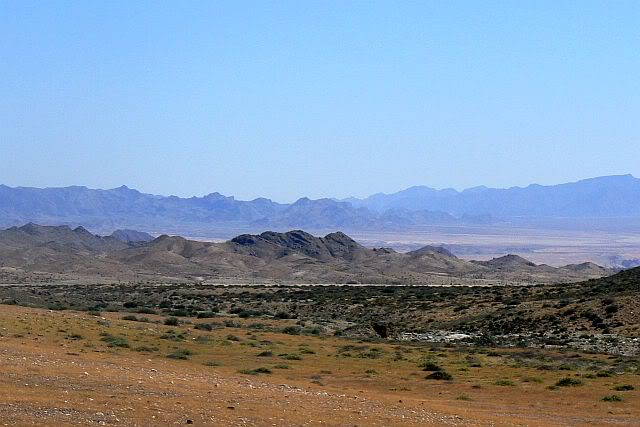Informative Intermezzo 
while Toko is occupied otherwise

or playing with the ellies the whole day

The Richtersveld is not only home to an old pastoralist culture (called „transhumanance“, a semi-nomadic way of life of the herders who move with their herds of goats from one seasonal grazing area to another), but also to an impressive diversity of plants due to specific clima conditions of the area.
The Richtersveld region is part of the Namaqualand and the Succulent Karoo. So what is what now?
The
Karoo-Namib landscape has three sub-regions:
1. The
Namib desert has unpredictable summer rainfalls (less than 100mm annual rainfall inlands and less than 25mm at the coast). There is only sparse vegetation, mostly short-lived herbs and grasses.
2. The
Nama-Karoo has sporadic summer rainfalls (100to 300mm annual rainfall). The vegetation is dominated by Karoobossies (low shrubs).
3. The
Succulent Karoo has regular winter rainfalls (about 150mm annual rainfall). The characteristic vegetation are dwarf shrubs with succulent leaves.
And here we are, in the Succulent Karoo – a region well-known for its bio-diversity with over 5,000 species of plants, of which are about half endemic. As the name indicates, there a succulents (plants that can store water in thick leaves or swollen stems), but also geophytes (plants that store water in underground organs like bulbs), annual plants (spring flowers as daisies) and a low number of tree species.
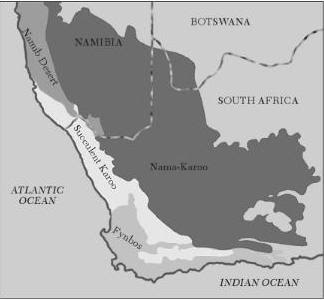
The Succulent Karoo now has four regions: Namaqualand, Western Mountain Karoo, Tankwa Karoo, Little Karoo.
Namaqualand is the region of the Succulent Karoo that is influenced by winter rainfall

and fog. And there are again different regions:
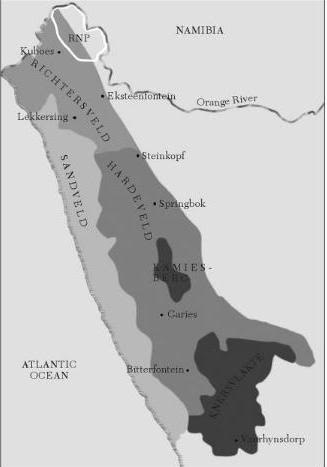
1. The
Knersvlakte is a landscape of flat plains with white quarz gravels north of the Olifants river and has about 150mm rainfall per year.
2. The
Hardeveld is part of the Great Escarpement, an area of granite mountains and hills with 200mm rainfall.
3.
Kamiesberg is the coldest, wettest and highest place in Namaqualand with 400mm rainfall per year. It is a spot of large granite domes (up to 1,700 m high).
4. The
Sandveld is the sandy strip on the coast with 100 mm (north) to 150mm (south) annual rainfall.
5. And the
Richtersveld which is a transitional zone with several ecosystems and rainfalls between 50 mm (on the valley floors) and 300mm rainfall (on west-facing mountain slopes). It is located between the winter rainfall zone of Namaqualand and the summer rainfall zone of the Nama Karoo and has three biomes: The Succulent Karroo biome is predominant, but there is also a part of desert biome in the east and north and on the higher mountains you find a bit of Fynbos. Furthermore the mountain slopes tend to run in north-south direction, so the malmokkies and clouds don’t reach the interior. That means, that the west facing slopes get pretty good rains, but the east facing slopes are drier and that’s why there are found some Nama Karoo species such as euphorbias.



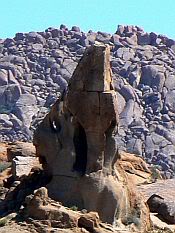

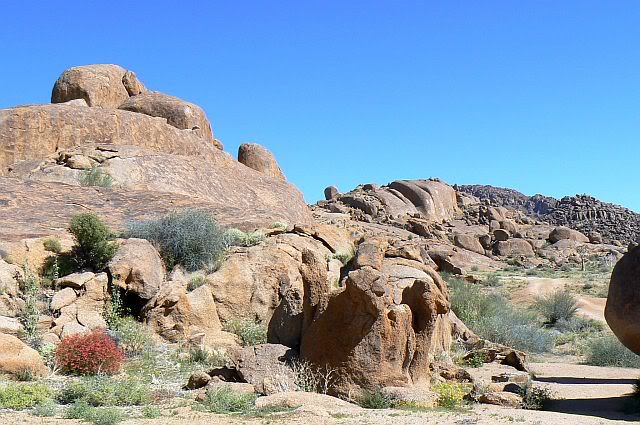
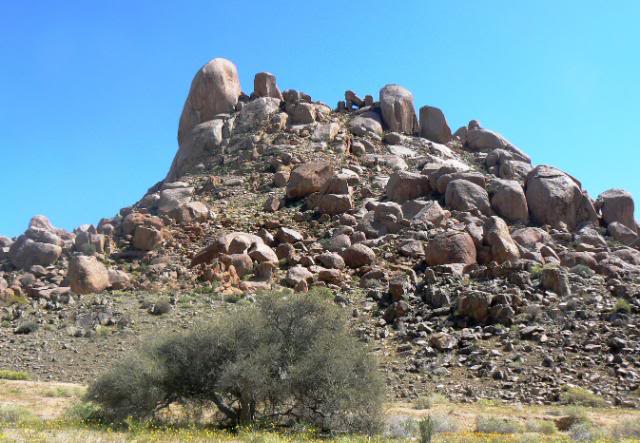
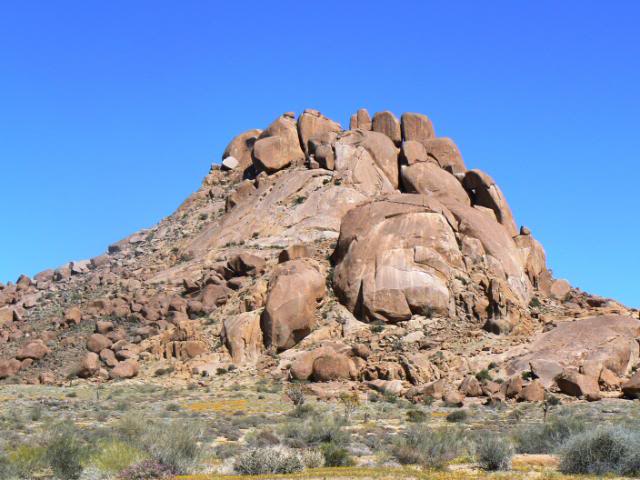
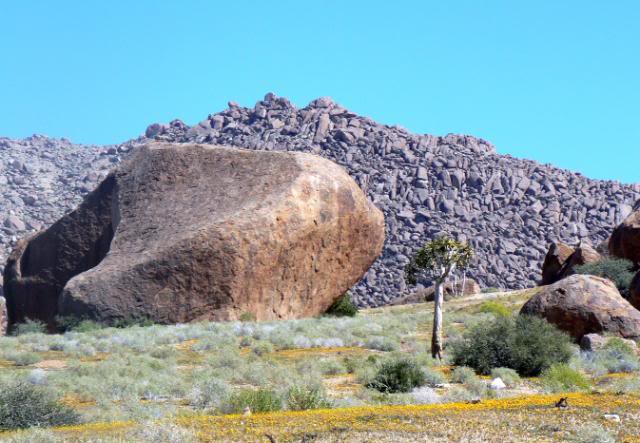
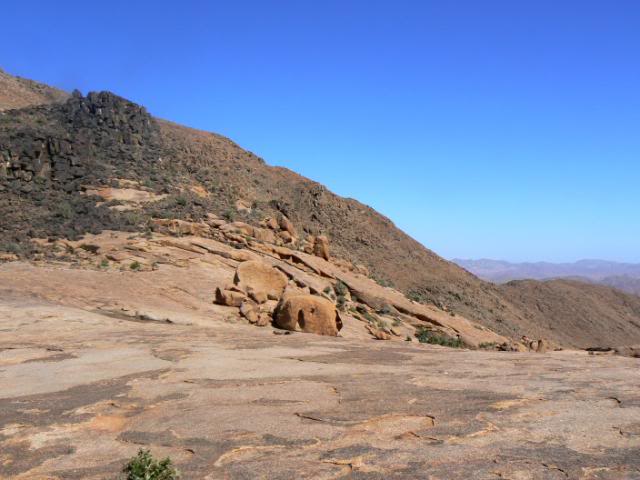
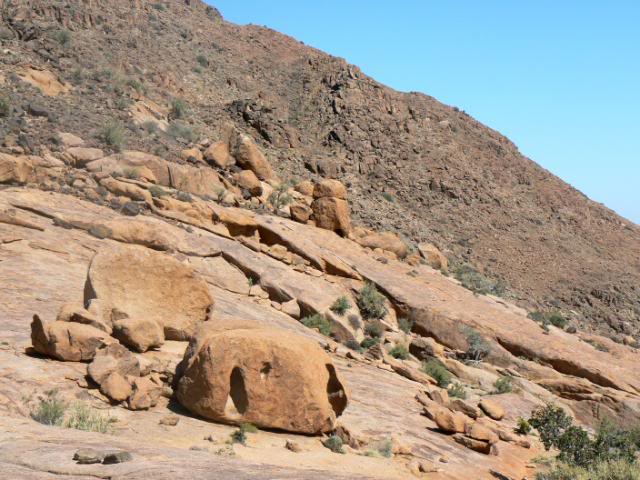
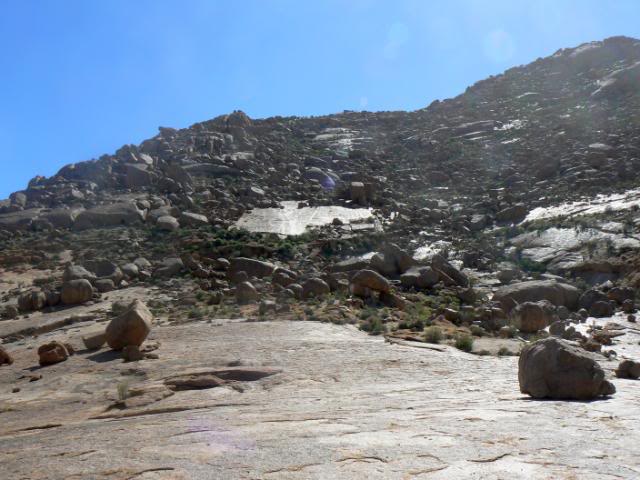
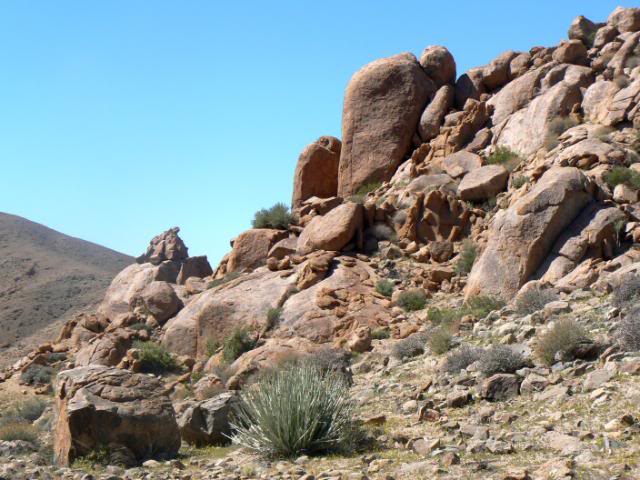
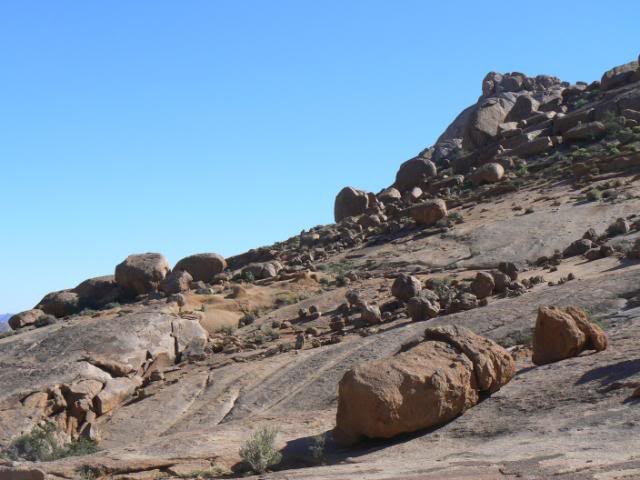
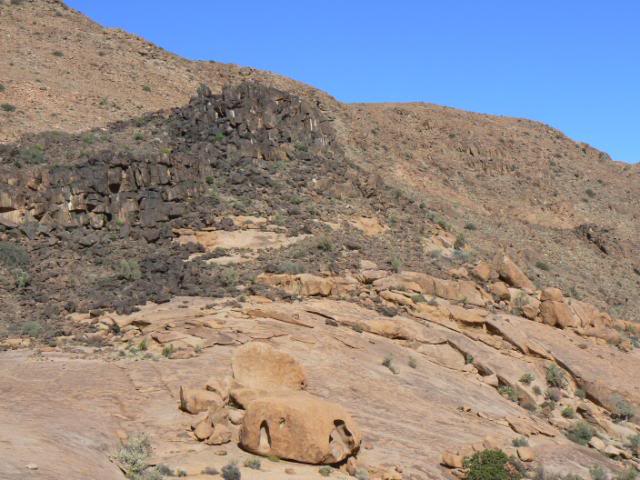
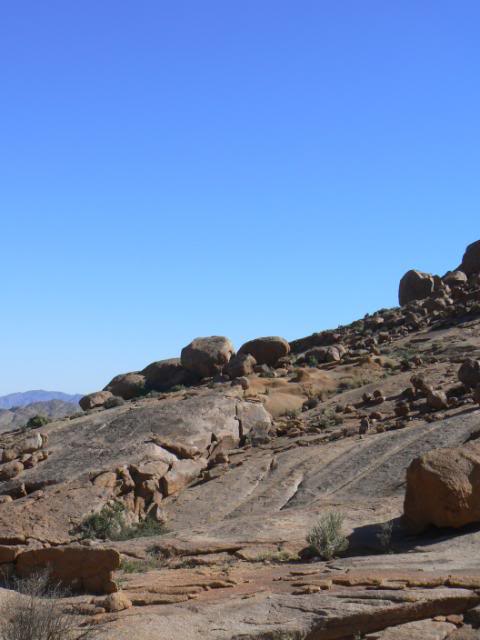
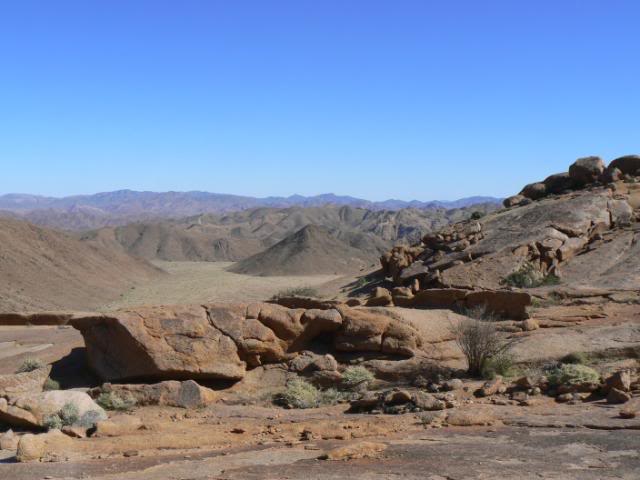
 all
all , I did not understand everything, but the guessing what was said was part of all the fun we had this evening.
, I did not understand everything, but the guessing what was said was part of all the fun we had this evening. Ons moet kilometers ver stap om die biesies in die veld te gaan pluk.
Ons moet kilometers ver stap om die biesies in die veld te gaan pluk. Die biesies word dan uitgerood totdat dit n ligte geel kleur afskei.
Die biesies word dan uitgerood totdat dit n ligte geel kleur afskei. Week die geel kleurige biesies in die 25 liter warm water tot redelik sak.
Week die geel kleurige biesies in die 25 liter warm water tot redelik sak. Die biesies is nou gereed om gesteek te word (gebruik die els om die biesies te steek, natuurlik een vir enn).
Die biesies is nou gereed om gesteek te word (gebruik die els om die biesies te steek, natuurlik een vir enn). Trek die gevlegte Hessian deur die gesteekte biesies.
Trek die gevlegte Hessian deur die gesteekte biesies. Gebruik die stryk plankie om die gevlegte biesies te stryk.
Gebruik die stryk plankie om die gevlegte biesies te stryk. Soom die randte van die gevlegte biesies en sny die kante af met die sny mes.
Soom die randte van die gevlegte biesies en sny die kante af met die sny mes. Die matjie is gereed om gebruik te word.
Die matjie is gereed om gebruik te word. while Toko is occupied otherwise
while Toko is occupied otherwise  or playing with the ellies the whole day
or playing with the ellies the whole day 


